Satirical artist Kacey Wong’s (黃國才) latest solo exhibition — his first since moving here from Hong Kong last year — is a wakeup call for Taiwanese.
“They can look at me as an oracle,” says Wong, who was on the front lines of Hong Kong’s 2014 pro-democracy “Umbrella movement” protests. His politically-driven artwork has long skewered the Chinese Communist Party (CCP), most recently focusing on the regime’s authoritarian crackdown, including mass arrests in Hong Kong.
The Tainan exhibition, ominously titled “Battlefield Apocalypse,” features about 20 new and old works of art. Opening last month at 182artspace, the show continues through April 25.
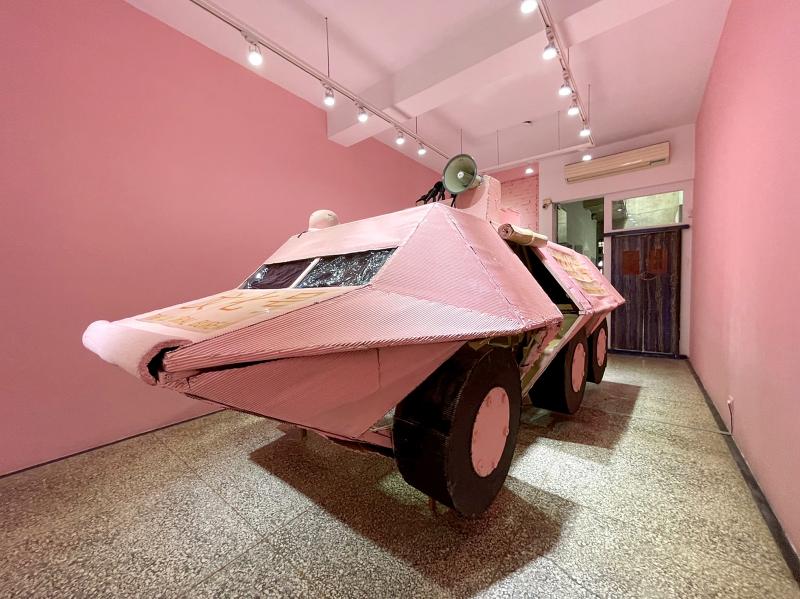
Photo courtesy of Kacey Wong
Wong will give an artist’s talk at the gallery on Sunday, focusing on how art can contribute to political resistance.
The multi-media piece, Ghost Recon, features a video of Wong dressed in soldier’s fatigues. As he walks through the jungle into an abstract world he discovers a dead body, only to realize that he is the one who has died.
“We’re all facing the same fear,” Wong says. “It’s about a heightened sense of anxiety about what may come.”
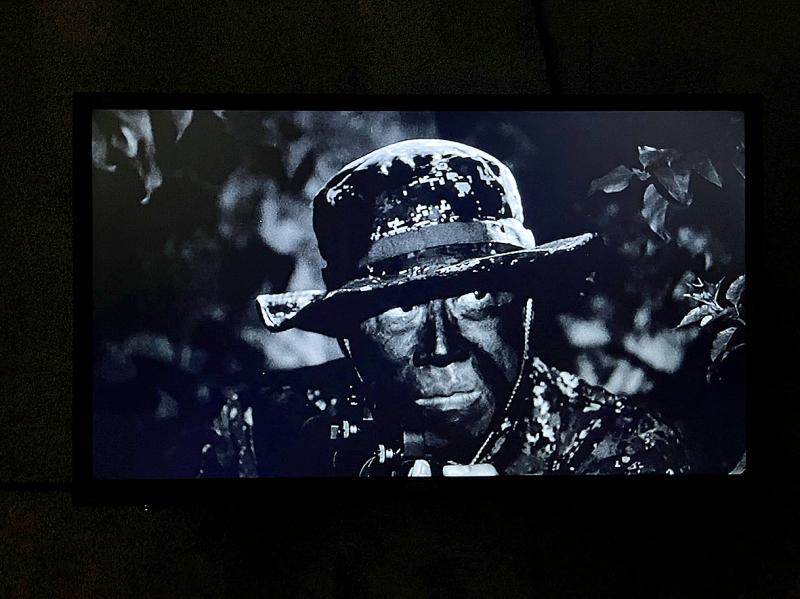
Photo courtesy of Kacey Wong
In a narrow walkway on the gallery’s rooftop, a flashing red and green neon sign declares that today’s Hong Kong is tomorrow’s Taiwan. It’s a warning, Wong said bluntly, as is the war in Ukraine. While the conflict is being waged far away, it cannot be ignored that something similar could happen here, he says.
The sculpture Dragon Slayer Missile Launcher imagines how Taiwan’s traditional temples would be used to protect the nation against a Chinese invasion. It’s playful but with serious undertones, a common theme of Wong’s artwork.
In 2012, Wong paraded a big pink tank through the streets of Hong Kong to protest what he saw as political corruption and the CCP’s interference in the affairs of the city. Named The Real Culture Bureau, it’s one of the many sculptures Wong brought with him from his flight from Hong Kong — a move he’s characterized as one of self exile.
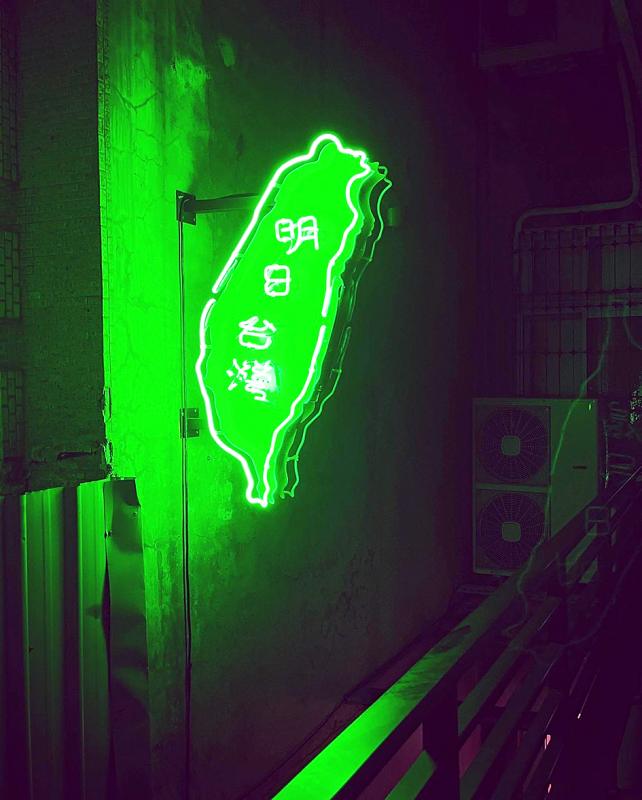
Photo courtesy of Kacey Wong
Wong said he’s thankful for the artistic freedom he can enjoy in Taiwan. This kind of exhibition, with overtly political artwork, most likely would have landed the 51-year-old artist in a Hong Kong jail.
“I want to show how citizens can fight back with dignity,” Wong says. Taiwanese have the will to stand up to aggression, Wong adds, but it’s a matter of being prepared.
The nation should continue to increase its defense spending while bolstering its ties to the US, Japan and Korea he says.
“But you don’t have to be a soldier to fight,” Wong says. “Everybody can fight.”
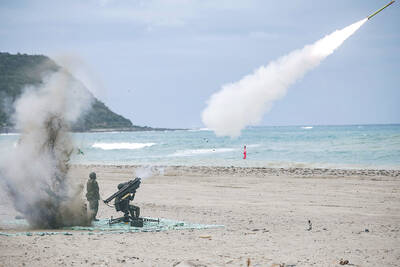
In late October of 1873 the government of Japan decided against sending a military expedition to Korea to force that nation to open trade relations. Across the government supporters of the expedition resigned immediately. The spectacle of revolt by disaffected samurai began to loom over Japanese politics. In January of 1874 disaffected samurai attacked a senior minister in Tokyo. A month later, a group of pro-Korea expedition and anti-foreign elements from Saga prefecture in Kyushu revolted, driven in part by high food prices stemming from poor harvests. Their leader, according to Edward Drea’s classic Japan’s Imperial Army, was a samurai

The following three paragraphs are just some of what the local Chinese-language press is reporting on breathlessly and following every twist and turn with the eagerness of a soap opera fan. For many English-language readers, it probably comes across as incomprehensibly opaque, so bear with me briefly dear reader: To the surprise of many, former pop singer and Democratic Progressive Party (DPP) ex-lawmaker Yu Tien (余天) of the Taiwan Normal Country Promotion Association (TNCPA) at the last minute dropped out of the running for committee chair of the DPP’s New Taipei City chapter, paving the way for DPP legislator Su
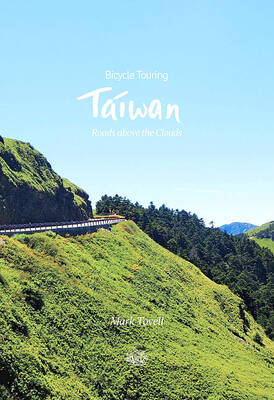
It’s hard to know where to begin with Mark Tovell’s Taiwan: Roads Above the Clouds. Having published a travelogue myself, as well as having contributed to several guidebooks, at first glance Tovell’s book appears to inhabit a middle ground — the kind of hard-to-sell nowheresville publishers detest. Leaf through the pages and you’ll find them suffuse with the purple prose best associated with travel literature: “When the sun is low on a warm, clear morning, and with the heat already rising, we stand at the riverside bike path leading south from Sanxia’s old cobble streets.” Hardly the stuff of your
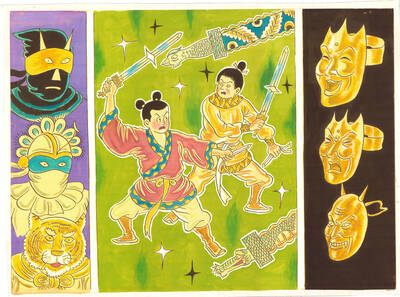
April 22 to April 28 The true identity of the mastermind behind the Demon Gang (魔鬼黨) was undoubtedly on the minds of countless schoolchildren in late 1958. In the days leading up to the big reveal, more than 10,000 guesses were sent to Ta Hwa Publishing Co (大華文化社) for a chance to win prizes. The smash success of the comic series Great Battle Against the Demon Gang (大戰魔鬼黨) came as a surprise to author Yeh Hung-chia (葉宏甲), who had long given up on his dream after being jailed for 10 months in 1947 over political cartoons. Protagonist